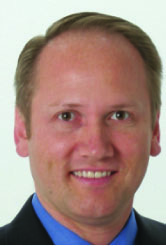:dropcap_open:P:dropcap_close:aperwork. Administration. Billing. Employees. Supplies. Collection. Equipment. SOAP notes. Insurance claims. Legal issues. These are the realities of a chiropractic practice, and we haven’t even discussed the adjustment. Did we all, prior to becoming chiropractors, tell our friends and colleagues that we had a burgeoning desire to open up a chiropractic practice so that we can dive right in to documentation, administration, and collection? Of course not. It is the patient, the one needing the adjustment, that drives our efforts. And yet, even with our best intentions, there are always the administrative duties that accompany those efforts. So, as chiropractors, it is our duty to minimize the administration of our practices while maximizing the care we provide our patients. But that doesn’t mean we have to take ourselves away from the patients and become pencil-pushers. Automation tools can empower our practices and help us get our hands off the paperwork and back on the patient.
 Moving forward, with the multitude of health care changes looming over us, automating the office is no longer an option, it’s a necessity. No doubt, there will be some that are pessimistic about the changes in EHR healthcare mandates, as it’s always easier to follow the path of least resistance. But, taking a closer look, integrating a complete practice management system into a practice is the bridge to the efficiency we as chiropractors need to not only improve our patient care, but also compete in the marketplace as well. Either way, there will be changes in documentation procedures. New coding will have to be learned and software technology will be able to solve most of the difficulties these new changes will present. Chiropractic practices that convert to fully automated software systems will be able to greatly reduce office expenditures after these changes are implemented. In this case, the software automation will make the transition you will experience a much smoother process.
Moving forward, with the multitude of health care changes looming over us, automating the office is no longer an option, it’s a necessity. No doubt, there will be some that are pessimistic about the changes in EHR healthcare mandates, as it’s always easier to follow the path of least resistance. But, taking a closer look, integrating a complete practice management system into a practice is the bridge to the efficiency we as chiropractors need to not only improve our patient care, but also compete in the marketplace as well. Either way, there will be changes in documentation procedures. New coding will have to be learned and software technology will be able to solve most of the difficulties these new changes will present. Chiropractic practices that convert to fully automated software systems will be able to greatly reduce office expenditures after these changes are implemented. In this case, the software automation will make the transition you will experience a much smoother process.
Automated software also provides your office with many solutions so that you and your staff can streamline many of the daunting tasks that managing the office requires. Electronic Health Records provided by automated software systems now combine documentation, billing, scheduling, reporting and much more into one HIPPA-compliant system to drastically reduce the time it takes to do the tasks that your office is already doing.
Here are some of the features that software automation can take off your hands:
Streamlining the Signing in Process at the Front Desk
Modern systems can allow patients to check themselves in by fingerprint, pin number, bar code scan or swipe card. All of these features are now available through automation to streamline a patient’s arrival. Patients can arrive, check themselves in and then have a seat in the waiting room until you are ready to see them, and even be called back to a room through an automated announcement system.
Total Patient Flow Management
From one screen on the computer, the right automation can help staff manage the entire flow of the office. They can easily view the patient’s purpose of visit, their provider, who has arrived, who has checked-in, who has checked-out, who owes you money and who is running late.
Patient Scheduling
Automated software can allow the customization of several views so that your staff can easily keep track of a patient’s schedule. They can view past, present and future appointments with a patient all at once. Also, administrative notes and insurance information for each patient can be accessed within seconds.
Access to the Patient’s Entire File
Imagine seeing your chiropractic SOAP notes, procedure and diagnosis codes, treatment plan information and imaging within one comprehensive screen that gathers and inputs the information you need at the touch of your finger.
Appointment Reminders
Having patient retention problems? Automatically send e-mail reminders of their upcoming appointments to your patients. You can also send out alerts to your staff to remind them of insurance expirations, new patient exams, or sale item suggestions. Why not let your software remember to remind your staff?
Patient Billing and Collection
 One of the features that makes a software management system so attractive is the billing feature. Most chiropractic software systems have built-in electronic billing as well as standard paper billing. This feature can save your office thousands of dollars every year in billing and collection costs. The process is easy as well as efficient. Many systems can print monthly statements or use an e-mail system to remind your patients that a bill is due. They can also send out delinquency notices so that your office can collect past due payments.
One of the features that makes a software management system so attractive is the billing feature. Most chiropractic software systems have built-in electronic billing as well as standard paper billing. This feature can save your office thousands of dollars every year in billing and collection costs. The process is easy as well as efficient. Many systems can print monthly statements or use an e-mail system to remind your patients that a bill is due. They can also send out delinquency notices so that your office can collect past due payments.
Just as it is important to identify a software system that meets all of your needs, one must also look closely at the support that stands behind the software. Along with robust training, pick a software company that partners with you and your staff every step of the way. Do they have a dedicated representative that is there for you when a question arises? Do they offer access to a support community online consisting of other chiropractic offices that can readily help you with any questions or issues that may be encountered while adapting to the new system? Are they ONC-ATCB certified?
Truthfully, no doctor enjoys writing long chiropractic reports or creating SOAP notes. Chiropractors are starting to realize the advantages of using automated software, and most doctors certainly would agree that their time could be better spent caring for more patients and tending to other important things, including getting a little rest and relaxation for themselves.
I hear many colleagues talk about the ‘expense’ of practice management software, and I immediately counter by asking them to consider the expense of NOT incorporating a fully-functioning practice management software into their offices. Automation saves you valuable time, energy, and staff. Automation allows the chiropractor to spend more time with more patients—while streaming operations, reducing staff, and increasing productivity.
Ultimately, how you and your staff spend your time is the most important consideration. Time spent defines profitability, quality of patient care and the overall efficiency of the practice. Chiropractic office automation is designed to revolutionize your practice from beginning to end. Automation cuts costs, saves time and will provide you with the tools you need to improve the quality of care to your patients. It can improve work flow to keep your office moving at optimum speed.
In our profession, change isn’t coming—it’s already arrived. General (Ret.) Eric Shinseki, former Chief of Staff of the Army, said it best when addressing change: “If you don’t like change, you’re going to like irrelevance even less.” As a community, it’s time that we embrace change, empower our practices with powerful automation tools, and ultimately improve the care we give to the patients we all collectively serve.




 :dropcap_open:D:dropcap_close:o you believe in the power of information? Do you believe media such as TV, radio, newspaper, magazine hold a lot of power by providing information to people? If your answer is “Yes,” we are on the same page and you may find this article very interesting. Now, have you ever thought you can use the power of information to be a better doctor? Have you ever thought you can use the power of information to improve your practice? Let’s talk about it and see how we can achieve this.
:dropcap_open:D:dropcap_close:o you believe in the power of information? Do you believe media such as TV, radio, newspaper, magazine hold a lot of power by providing information to people? If your answer is “Yes,” we are on the same page and you may find this article very interesting. Now, have you ever thought you can use the power of information to be a better doctor? Have you ever thought you can use the power of information to improve your practice? Let’s talk about it and see how we can achieve this.

 Dr. Steven J. Kraus is CEO of Future Health, Inc., a company that partners with chiropractors to deliver a comprehensive clinic management solution, including fully-integrated EHR. Dr. Kraus is a recognized expert in building successful clinics, having developed and sold 18 practices of his own and provided strategic consulting services to more than 400 healthcare businesses. He offers leadership to numerous industry associations and currently serves as the Chairman of the Iowa Board of Chiropractic. Contact Dr. Kraus at skraus@Future- HealthSoftware.com for more information.
Dr. Steven J. Kraus is CEO of Future Health, Inc., a company that partners with chiropractors to deliver a comprehensive clinic management solution, including fully-integrated EHR. Dr. Kraus is a recognized expert in building successful clinics, having developed and sold 18 practices of his own and provided strategic consulting services to more than 400 healthcare businesses. He offers leadership to numerous industry associations and currently serves as the Chairman of the Iowa Board of Chiropractic. Contact Dr. Kraus at skraus@Future- HealthSoftware.com for more information.

 Dr. Steven J. Kraus is Founder and Chairman of Future Health―the nation’s #1 provider of chiropractic-specific EHR/practice management software. He has more than 22 years’ experience in practice management and is an acknowledged expert in Heath IT, including EHR and the up-to-$44,000 ARRA government incentive. Dr. Kraus serves on numerous committees and frequently travels to Washington, D.C., to represent chiropractic physicians in healthcare discussions and policymaking. To learn more about Future Health’s cloud-based eConnect EHR & practice management software, visit www.FHeConnect.com/1023 or call Toll Free 1-888-434-7347.
Dr. Steven J. Kraus is Founder and Chairman of Future Health―the nation’s #1 provider of chiropractic-specific EHR/practice management software. He has more than 22 years’ experience in practice management and is an acknowledged expert in Heath IT, including EHR and the up-to-$44,000 ARRA government incentive. Dr. Kraus serves on numerous committees and frequently travels to Washington, D.C., to represent chiropractic physicians in healthcare discussions and policymaking. To learn more about Future Health’s cloud-based eConnect EHR & practice management software, visit www.FHeConnect.com/1023 or call Toll Free 1-888-434-7347.